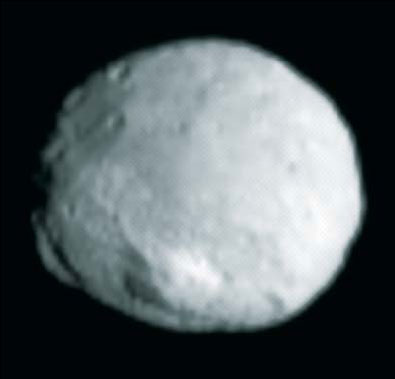Space shuttle bids farewell to ISS
Updated: 2011-07-20 08:19
By Marcia Dunn (China Daily)
|
|||||||||||
CAPE CANAVERAL, Florida - A space shuttle left the International Space Station (ISS) for the very last time on Tuesday, heading home to end the 30-year run of a vessel that kept astronauts flying to and from orbit longer than any other US rocketship.
 |
|
An image of the asteroid Vesta captured by the Dawn spacecraft on July 1. NASA Via AP |
Atlantis slipped away as the two spacecraft soared nearly 400 kilometers above the Pacific Ocean.
All that remains of NASA's final shuttle voyage is the touchdown, targeted for the pre-dawn hours of Thursday back home in Florida.
As a final salute, the space station was rotating 90 degrees to provide never-before-seen views of the complex. The shuttle and its crew of four were to fly halfway around the station, cameras whirring aboard both vessels to record the historic event.
Emotions ran high, both in orbit and at Mission Control. The naval ship's bell aboard the space station chimed three times as Atlantis slowly backed away.
"Atlantis departing the International Space Station for the last time," announced space station astronaut Ronald Garan Jr. "We'll miss you guys."
Shuttle commander Christopher Ferguson thanked the six station residents for their hospitality.
Flight controllers savored the dual TV images of the shuttle - the last ever seen from orbit - and the station. Mission Control called it the second-best view on Earth.
"It must look pretty spectacular," Ferguson replied.
And it was: Atlantis sailing serenely against the black void of space, its payload bay wide open, and the space station, its huge solar wings glowing golden in the sunlight.
Atlantis spent eight-and-a-half days at the space station and left behind a year's worth of supplies, insurance in the event commercial providers encounter delays in launching their own cargo ships.
Meanwhile, NASA's Dawn spacecraft was captured into orbit around the massive asteroid Vesta after a 2.7 billion km journey and is preparing to begin a study of a surface that may date to the earliest era of the solar system, the space agency said on Monday.
The entry into orbit occurred while the spacecraft's antenna was pointed away from Earth, so mission controllers had to wait for Dawn to re-establish contact to confirm its success.
"We are beginning the study of arguably the oldest extant primordial surface in the solar system," the mission's principal investigator, Christopher Russell from the University of California, Los Angeles, said in a statement.
NASA said that after the orbital capture, Dawn sent an initial close-up image taken for navigation purposes. Before the Dawn mission, images of Vesta were obtained by ground- and space-based telescopes but did not show much surface detail.
Vesta, 530 km in diameter, is the second-most massive object in the asteroid belt and is believed to be the source of many meteorites that fall to Earth.
Associated Press